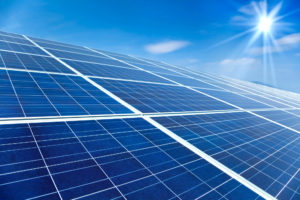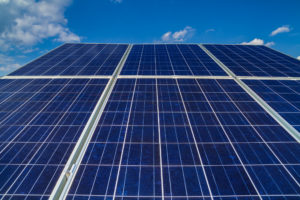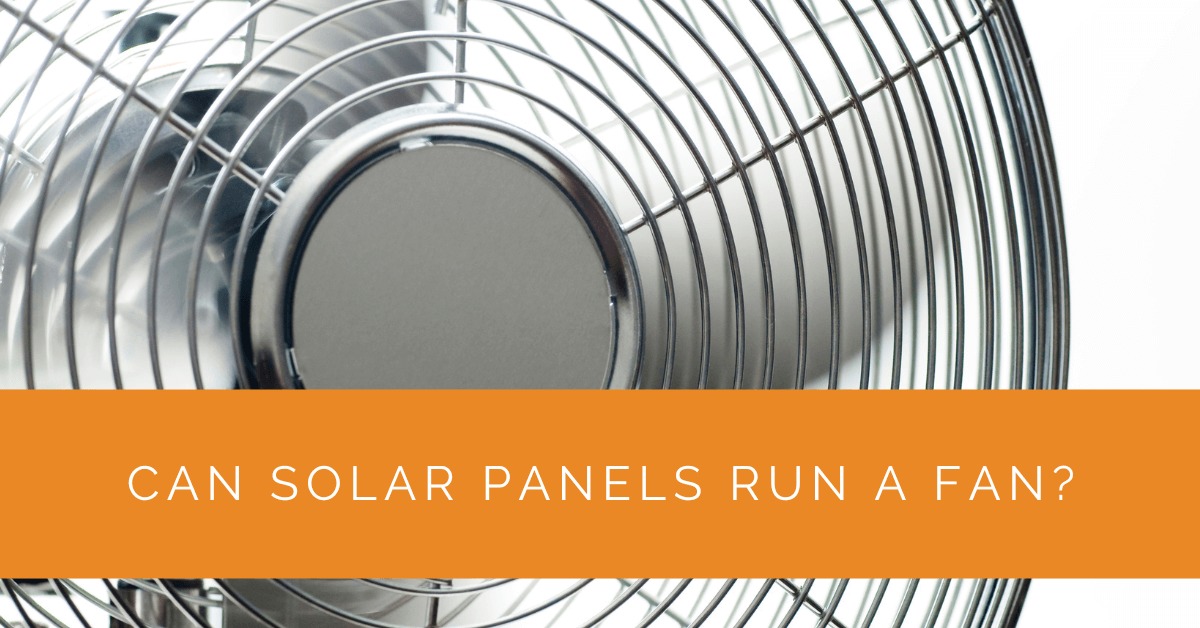With the increasing popularity of solar power, many people wonder if solar panels can effectively power fans. In this article, we will explore the possibilities and benefits of using solar panels to run fans. From ceiling fans to portable options, solar-powered fans offer energy-efficient cooling solutions while reducing reliance on traditional electricity sources.
Contents
- 1 Key Takeaways
- 2 How Solar Panels Work
- 3 Solar-Powered Fans: An Overview
- 4 Types of Solar-Powered Fans
- 5 Powering Fans with Solar Panels
- 6 Case Study: Harnessing Solar Power to Run a Fan
- 7 Expert Insights From Our Solar Panel Installers About Can Solar Panels Run a Fan?
- 8 Experience Solar Excellence with Us!
- 9 Conclusion
Key Takeaways
- Solar panels can effectively power fans, providing an energy-efficient and eco-friendly cooling solution while reducing reliance on traditional electricity sources.
- Solar-powered fans, including ceiling fans, attic fans, and outdoor fans, offer versatility and convenience for various indoor and outdoor applications.
- Proper calculation of wattage requirements, sizing the solar panel system, and considering safety measures ensure optimal performance when directly powering a fan from a solar panel.
How Solar Panels Work
Solar panels harness the power of sunlight and convert it into usable electrical energy. This process involves several key components to generate clean and renewable power.
The heart of a solar panel is the photovoltaic (PV) cells. These cells are made of semiconductor materials, such as silicon, which can convert sunlight directly into electricity. When sunlight hits the surface of the solar panel, it excites the electrons in the PV cells, creating a flow of electrons. This flow of electrons generates a direct current (DC) of electricity.
An inverter is used to make this DC electricity usable in our homes and appliances. The inverter converts the DC electricity from the solar panels into alternating current (AC) electricity used in most household appliances.
The AC electricity produced by the inverter can then be utilized to power various devices, including fans. Solar panels produce electricity as long as sunlight is available, making them an excellent power source during daylight hours.
Solar-Powered Fans: An Overview
Solar-powered fans have gained significant popularity as an eco-friendly alternative to traditional fans. These fans utilize the sun’s energy, allowing for reduced electricity costs and a lower carbon footprint. Let’s delve deeper into why solar-powered fans are a great choice for cooling solutions.
- Energy Efficiency: Solar-powered fans are highly energy-efficient. By using solar energy directly, they eliminate the need for grid electricity. This means you can enjoy the cooling benefits of a fan without worrying about the impact on your electricity bill.
- Environmentally Friendly: Solar-powered fans contribute to a greener and more sustainable environment. By utilizing renewable energy, they reduce dependence on fossil fuels and help combat climate change. Using solar energy for fan operation aligns with the principles of a clean energy future.
- Versatility: Solar-powered fans are versatile and can be used in various settings. Whether you want to cool your indoor spaces, ventilate your attic, or enhance outdoor comfort, there’s a solar-powered fan available for every need. This versatility makes them an excellent choice for residential, commercial, and recreational applications.
- Off-Grid Solutions: Solar-powered fans are especially beneficial in off-grid locations or during power outages. Solar-powered fans can provide relief and comfort when traditional electricity sources are unavailable. They are particularly useful for outdoor activities, camping trips, or remote areas with limited access to electricity.

Types of Solar-Powered Fans
Solar-powered fans come in different types, each designed to meet specific cooling requirements. Let’s explore the three main types of solar-powered fans available in the market:
Solar-Powered Ceiling Fans
Solar-powered ceiling fans offer a highly efficient and sustainable cooling solution for indoor spaces. Solar panels directly power these fans, eliminating the need for grid electricity. Installing solar-powered ceiling fans allows you to enjoy refreshing airflow while significantly reducing your energy consumption.
Solar-powered ceiling fans operate quietly and efficiently, making them ideal for bedrooms, living rooms, and other areas where comfort and tranquility are paramount. They are available in various styles and sizes, allowing you to choose the perfect fan to complement your decor and cooling needs.
Solar-Powered Attic Fans
Attic spaces often accumulate heat, which can impact energy efficiency and cause discomfort in living areas below. Solar-powered attic fans provide an effective solution by actively ventilating the attic, reducing heat buildup, and improving overall energy efficiency in your home.
Solar-powered attic fans work by extracting hot air from the attic and replacing it with cooler outside air. The fan’s motor activates as the sun shines on the solar panels, drawing in fresh air and expelling hot air. This constant air circulation helps regulate temperatures in the attic, preventing it from becoming a heat trap.
By effectively ventilating the attic, solar-powered attic fans provide several benefits. First, they help reduce cooling costs by minimizing the strain on your air conditioning system. When properly ventilated attic prevents heat from radiating into your living spaces, reducing the need for excessive air conditioning.
Additionally, solar-powered attic fans contribute to the longevity of your roof and insulation. By preventing excess heat and moisture buildup, they help preserve the roof’s structural integrity and prevent mold and mildew growth.
When considering a solar-powered attic fan, assessing your specific needs is important. Factors such as the size of your attic, the climate you live in, and the amount of sunlight your roof receives will determine the fan’s size and capacity. Proper installation, including placing the solar panels in a location with optimal sunlight exposure, ensures maximum performance.
Solar-Powered Outdoor Fans
Solar-powered outdoor fans offer a refreshing breeze in outdoor spaces, such as patios, decks, or gazebos. These fans provide comfort and relief from the heat without relying on traditional electricity sources.
One of the key advantages of solar-powered outdoor fans is their portability. They often come with built-in solar panels and rechargeable batteries, allowing you to move them around easily and position them in the optimal sunlight position. This mobility makes them ideal for outdoor gatherings, camping trips, or even on-the-go cooling during outdoor activities.
Solar-powered outdoor fans are designed with durability and weather resistance in mind. They are constructed using materials that can withstand outdoor conditions, such as high temperatures, rain, and UV exposure. They are often equipped with adjustable settings, allowing you to customize the airflow according to your preference.
These fans provide a sustainable alternative to traditional outdoor cooling methods, such as air conditioning or misting systems, which consume significant energy. Solar-powered outdoor fans offer efficient and eco-friendly cooling options by harnessing the sun’s power, ensuring a pleasant and comfortable outdoor experience.

Powering Fans with Solar Panels
When powering fans with solar panels, understanding the wattage requirements and sizing the solar panel system correctly is crucial for optimal performance. Let’s explore the key considerations:
Calculating the Wattage Requirements
To determine the wattage requirements for powering a fan with solar panels, consider the fan’s power consumption. Most fans provide information about their power consumption in watts. For example, a small desk fan may consume around 25 watts, while a larger pedestal fan might require 75 watts.
By understanding the power consumption, you can estimate the amount of solar energy needed to power the fan effectively. This calculation ensures that your solar panel system can generate enough electricity to consistently meet the fan’s demand.
Sizing the Solar Panel System
Sizing the solar panel system involves determining the number of panels required to power the fan efficiently. Several factors influence this calculation, including geographical location, panel efficiency, and available sunlight.
Fewer solar panels may be required to generate the necessary electricity in areas with ample sunlight. However, regions with less sunlight or a higher demand for cooling might require additional panels to compensate for the lower energy production.
To ensure accurate sizing, it’s advisable to consult a solar energy professional to assess your specific needs and provide recommendations based on factors such as your location and the fan’s wattage requirements.
Directly Powering a Fan from a Solar Panel
In some cases, connecting a fan directly to a solar panel without batteries or inverters is possible. This setup is particularly viable when using fans that operate on DC power, as solar panels produce DC electricity. Connecting the fan directly to the solar panel eliminates the energy losses associated with converting DC to AC and then back to DC.
Directly powering a fan from a solar panel requires careful consideration of safety and efficiency. Here are a few key points to keep in mind:
- Use DC Fans: Ensure your chosen fan is designed to operate on DC power. DC fans are more efficient and suitable for direct connection to a solar panel. They typically have brushless motors and consume less power, making them ideal for solar applications.
- Wiring Considerations: Proper wiring is crucial for safety and optimal performance. Use appropriate gauge wires to connect the fan to the solar panel. It’s essential to follow electrical codes and guidelines to prevent electrical hazards. Consider consulting a professional electrician for assistance, especially if you are unfamiliar with electrical wiring.
- Solar Charge Controller: Even when directly connecting a fan to a solar panel, it is advisable to use a solar charge controller. A charge controller regulates the flow of electricity from the solar panel to the fan, preventing overcharging and protecting the fan from potential damage. The charge controller ensures that the fan receives steady and safe power.
While directly powering a fan from a solar panel offers simplicity and efficiency, it is important to note that this setup may have limitations. Fans that require AC power cannot be directly connected to a solar panel without an inverter. In such cases, an inverter is needed to convert the DC output of the solar panel into AC power that the fan can utilize.
Case Study: Harnessing Solar Power to Run a Fan
Background
At Solar Panels Network USA, we are committed to providing sustainable and cost-effective energy solutions. One common query from our clients is whether solar panels can effectively power household appliances, such as fans. To address this, we undertook a project to demonstrate the feasibility and benefits of using solar panels to run fans.
Project Overview
We partnered with a local family interested in reducing their electricity consumption and environmental impact. They wanted to explore the possibility of using solar energy to power their ceiling fan in their living room, which runs frequently, especially during the summer months. Our goal was to install a solar-powered fan system that would meet their cooling needs while showcasing the efficiency of solar energy.
Implementation
System Components and Configuration
To ensure the project’s success, we carefully selected high-efficiency components:
- Solar Panels: We installed three 300-watt solar panels on the roof, positioned to maximize sunlight exposure.
- Inverter: A 1,000-watt inverter was used to convert the DC electricity generated by the solar panels into AC electricity suitable for the ceiling fan.
- Charge Controller: A charge controller was installed to regulate the power flow and protect the system from overcharging.
Installation Process
The installation process was streamlined to minimize disruption. The solar panels were securely mounted on the roof, and all wiring was professionally installed to ensure safety and efficiency. The ceiling fan was connected to the solar power system via the inverter and charge controller, ensuring seamless operation.
Calculating Wattage and Sizing
We performed a detailed calculation to determine the fan’s wattage requirements, which was around 60 watts. This ensured the solar panel system was appropriately sized to meet the energy demands of the fan, even on days with less sunlight.
Results
Performance and Efficiency
The solar-powered fan system performed exceptionally well. During daylight hours, the fan operated entirely on solar energy, providing consistent and efficient cooling. The family reported that the fan’s performance was indistinguishable from when it was connected to the grid.
Cost Savings
By switching to a solar-powered fan, the family observed a noticeable reduction in their monthly electricity bills. The system’s initial cost was offset by the significant savings on energy costs, demonstrating the long-term financial benefits of solar energy.
Environmental Impact
The use of solar panels for the fan significantly reduced the family’s carbon footprint. By harnessing renewable energy, they contributed to a decrease in greenhouse gas emissions, aligning with their goal of promoting environmental sustainability.
Summary
Our project to run a ceiling fan using solar panels at Solar Panels Network USA successfully demonstrated the viability and benefits of solar-powered fans. The system provided efficient cooling, substantial cost savings, and a reduced environmental impact. This case study highlights the potential of solar energy to power household appliances, offering a sustainable and economical solution for our clients.
Expert Insights From Our Solar Panel Installers About Can Solar Panels Run a Fan?
Using solar panels to power fans is a practical and eco-friendly solution. It harnesses renewable energy, significantly reducing electricity costs while providing efficient cooling.
Senior Solar Installer
Solar-powered fans are perfect for off-grid applications. They offer reliable cooling even in remote locations where traditional electricity is unavailable.
Renewable Energy Specialist
Proper sizing and installation of the solar panel system are crucial for optimal performance. Ensuring adequate sunlight exposure and correct inverter selection can maximize efficiency.
Lead Solar Technician
Experience Solar Excellence with Us!
Trust in Solar Panels Network USA, where our seasoned experts deliver top-quality solar solutions for homes and businesses nationwide. With a legacy of countless successful installations and a commitment to sustainable energy, we’re your reliable partner in the solar journey. Ready for a brighter, eco-friendly future? Call us now at (855) 427-0058 and harness the power of the sun!
Conclusion
Solar panels can effectively solar panels offer a viable and sustainable option for powering fans. Using solar energy can reduce your carbon footprint, lower electricity costs, and enjoy the benefits of clean and renewable power. The possibilities are vast, whether you’re looking to cool your indoor spaces with solar-powered ceiling fans, regulate temperatures with solar-powered attic fans, or enhance outdoor comfort with solar-powered outdoor fans. Embracing solar energy for fan operation allows you to positively impact the environment while enjoying efficient and cost-effective cooling solutions.
About the Author
Solar Panels Network USA stands at the forefront of solar energy solutions, driven by a team of seasoned solar engineers and energy consultants. With over decades of experience in delivering high-quality solar installations and maintenance, we are committed to promoting sustainable energy through customer-centric, tailored solutions. Our articles reflect this commitment, crafted collaboratively by experts to provide accurate, up-to-date insights into solar technology, ensuring our readers are well-informed and empowered in their solar energy decisions.

